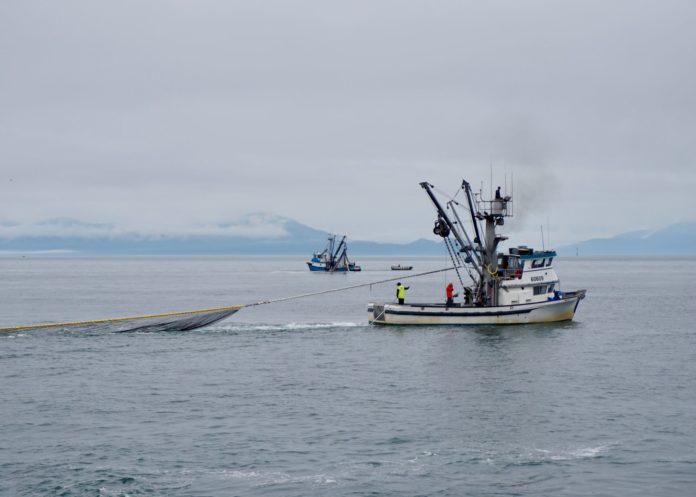
It’s as if a map was imprinted on their brain, as pink salmon heading back to their natal streams spawn within 100 meters of the point where their parents spawned.
“We can connect the parents and offspring from multiple populations along with body size, when they were sampled and where they were sampled,” said Samuel May, who led the University of Alaska Fairbanks (UFA) project that reviewed genetic data from over 30,000 pink salmon. “There’s all this fine-scale diversity that we didn’t really appreciate before.”
The research taps into an ongoing study in Prince William Sound that has collected DNA samples from pink salmon carcasses since 2011. The Alaska Hatchery Research Program samples pink salmon in 30 streams, including five where they attempt to collect samples from every salmon returning to spawn.
May is a post-doctoral fellow at UAF’s College of Fisheries and Ocean Sciences (CFOS).
Peter Westley, an associate professor at CFOS, and a member of the Alaska Hatchery Research Program (AHRP) also contributed to the study.
“We’re leaning on a dataset that’s had a ton of work put into it,” said Westley. “This is just the tip of the iceberg.”
“One of the most striking findings was the salmon’s ability to detect the specific location where it hatched,” said May. “Pinks don’t just return to a home stream or tideland. After traveling thousands of kilometers, they generally spawn within 100 meters of the point where their parents spawned.”
Genetic analysis also highlighted distinctions between areas within the streams where pinks spawn. Researchers said about 75% of the salmon spawn in intertidal areas, a zone affected by regular saltwater intrusion and apparently preferred by wild pinks. Hatchery salmon tend to travel into freshwater areas of those streams to reproduce. There, the project showed, they may be more likely to mate with other fish that also were stocked by hatcheries in those locations. Their origins are also associated with a variety of biological differences, including body size and reproductive success, the study showed.
While researchers did not specifically test for population of origin for all fish, “We know that most of these fish originated in Prince William Sound because we sampled returning adult parents and their returning adult offspring, two years later, in the same streams,” May said, in an email responding to questions about the study.
May said they also excluded all hatchery-origin fish from the study. This was because researchers could not have sampled their parents and therefore, they weren’t relevant to the questions under investigation about site fidelity.
“We know that hatchery fish can constitute a substantial proportion of the run in these streams, ranging generally from about 10-75%,” May said.
There have been several other studies, mostly of sockeyes, that showed site fidelity on a similar scale.
May said their study used a much larger sample size and corroborated results in multiple populations.
“Sockeye are generally presumed to home with the greatest fidelity, while pink salmon are assumed to be the least accurate,” he said. “Our results suggest maybe it is more complicated than we previously thought.”
May also acknowledged that hatchery-origin pink salmon do tend to travel into freshwater areas of streams to reproduce, and while there they may be more likely to mate with other fish also stocked by hatcheries in those locations.
“A study that came out last year, led by Kyle Shedd of ADF&G, showed that these hatchery-wild matings tend to generate about half as many offspring as wild-wild mating pairs,” May said. “The big question researchers hope to answer is what kinds of long-term impacts the hatchery fish have for wild salmon productivity and resilience.”













